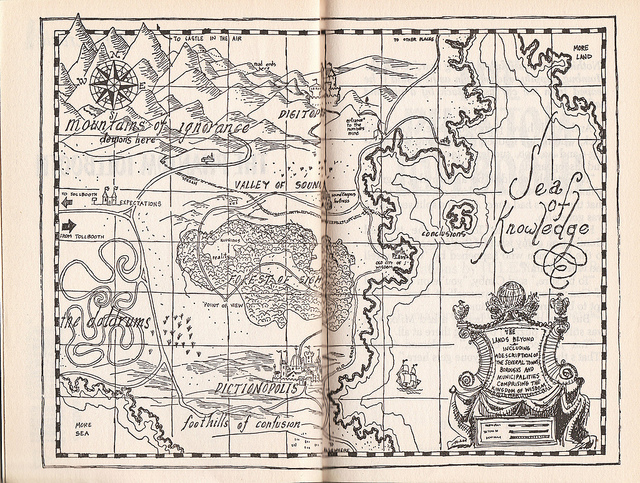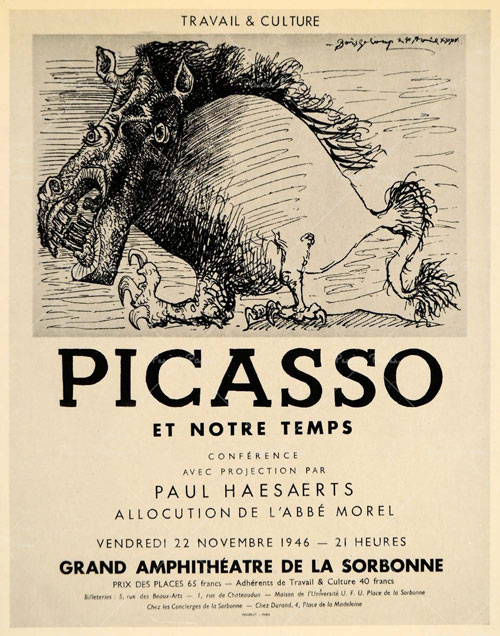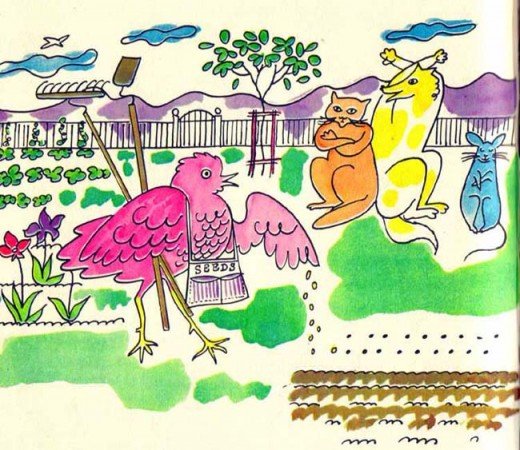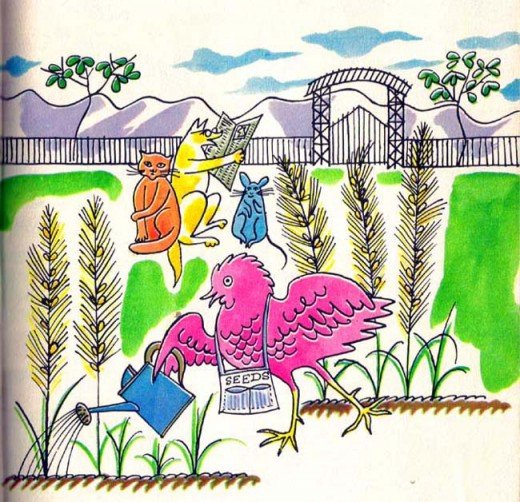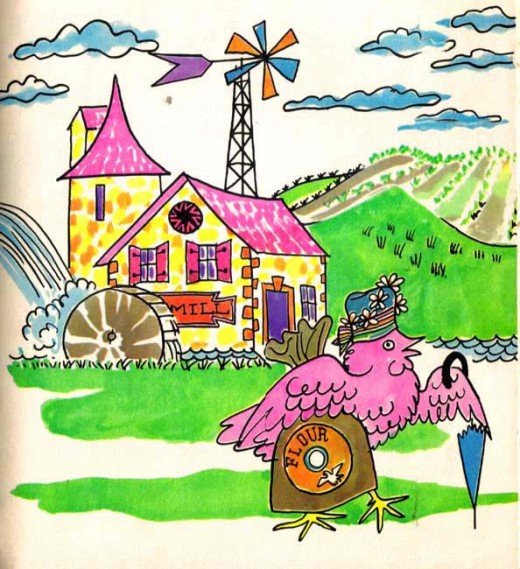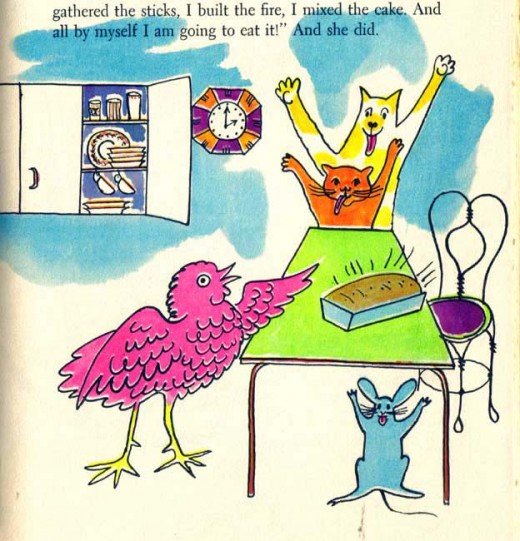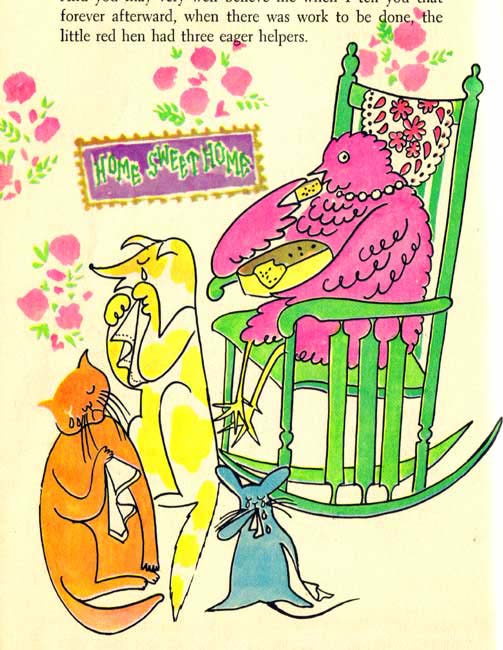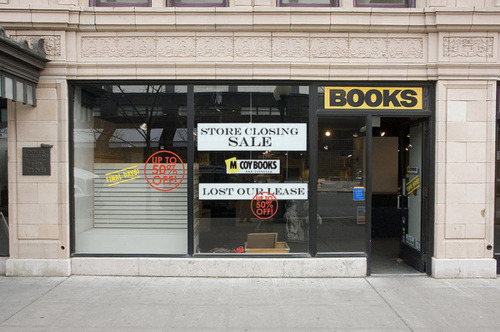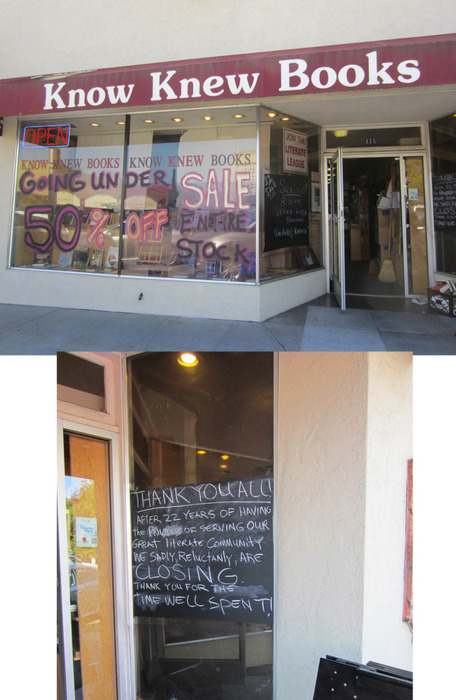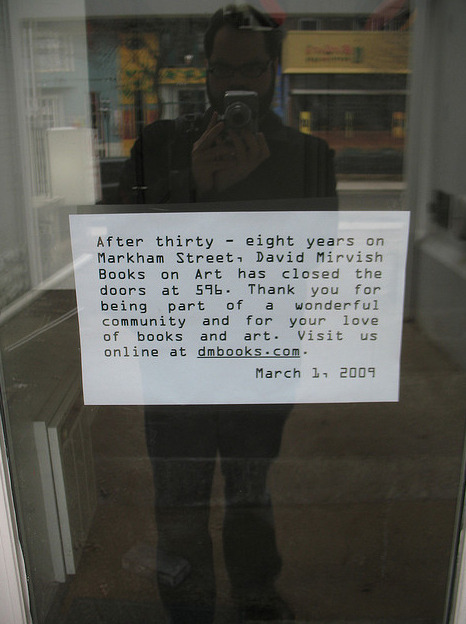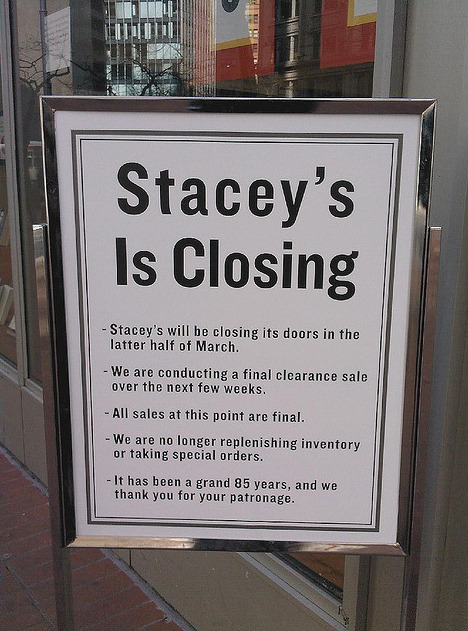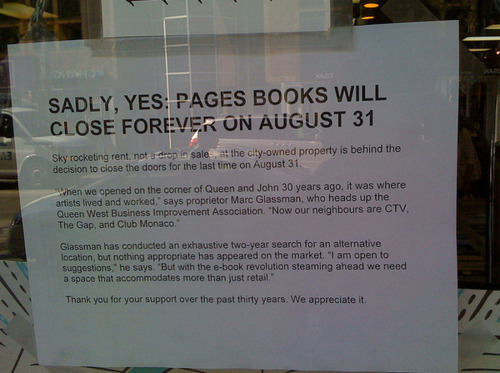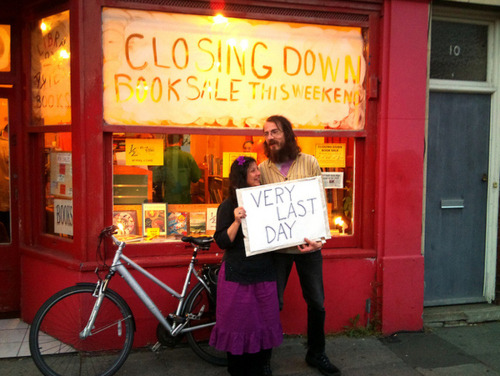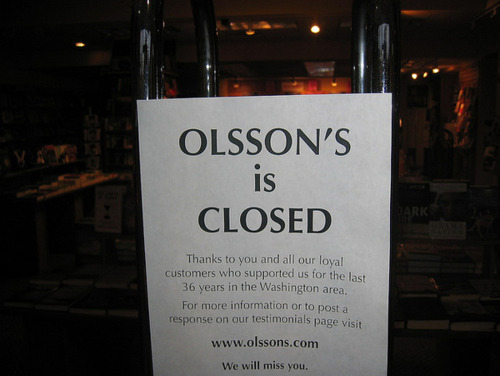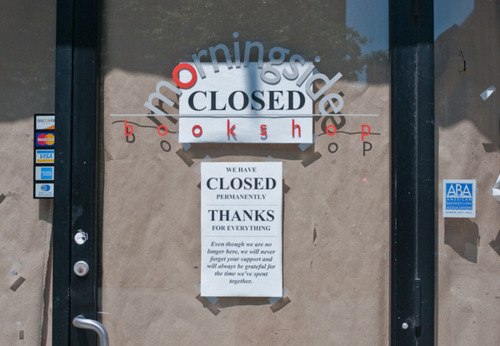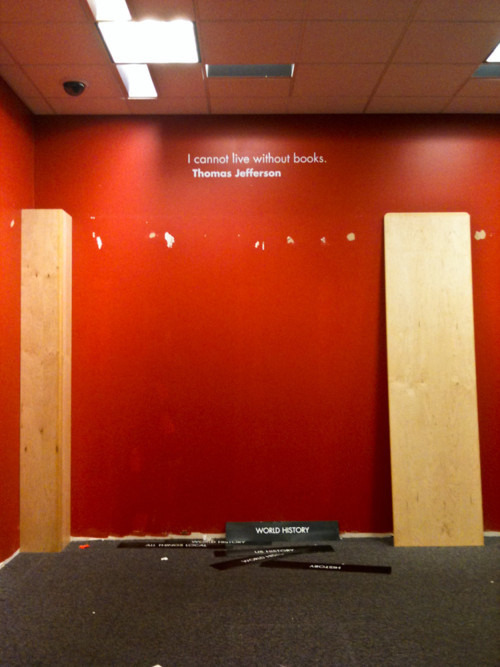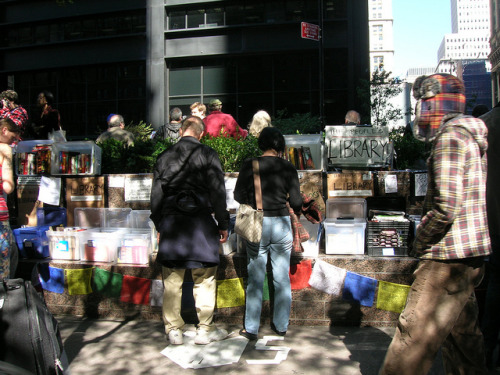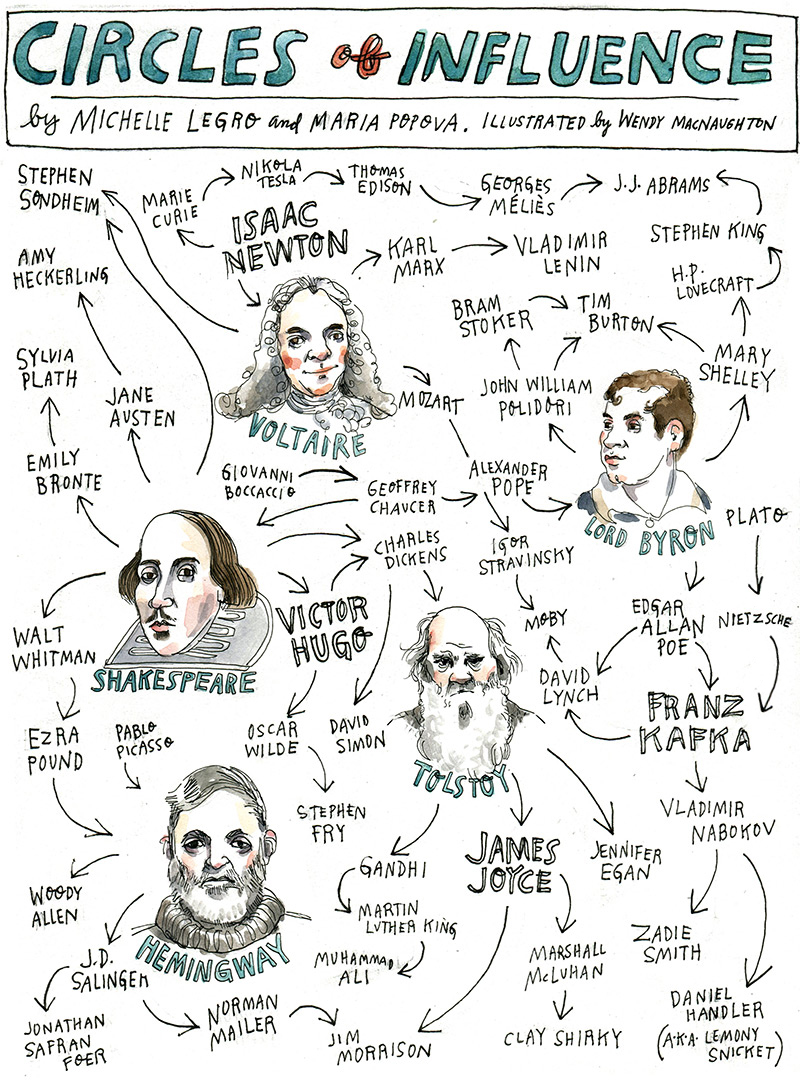Tracking innovation, development and experimentation in information studies and library science and spotting new technologies, trends, fun stuff and much more.
Thursday, October 27, 2011
Office of Fair Trading gives thumbs up to Amazon's purchase of The Book Depository
Despite industry organizations’ fears that Amazon’s acquisition of UK online bookseller The Book Depository will create a de facto monopoly, the Office of Fair Trading is approving the merger. In the OFT’s view, The Book Depository is so small that Amazon (NSDQ: AMZN) is not buying a real competitor.
The OFT found that “Amazon’s share of the UK online book market was strong,” but TBD’s accounted for only “between two and four percent of online retailing” of hardcover books in the UK. The OFT also said that most of TBD’s growth was taking place in overseas markets, not in the UK.
From Paid Content
Rent a Mac in the Clouds.
MacinCloud is a remote computer rental service that allows you to use a PC or Mobile Device to access an actual Mac through the Internet. You can then develop iPhone/iPad apps and run Mac programs. You will use a remote desktop connection program to connect to the rented Mac server. After logging in, you can remotely view and control the Mac as if you are sitting in front of the Mac screen.
The following are required for MacinCloud to operate properly:
Cable or FiOS Internet Connection (>1MB/s);
Window XP, VISTA or Windows 7; or
iPad or iPhone with any RDP App; or
Mac with any RDP program
7 billion people and you: What's your number?
What Microsoft Thinks the Future Will Look Like
...we're going to need a lot of hand sanitizer if Microsoft is right about the all-touch-everything future.
A Mini-Library Grace Brooklyn’s Street Corners

A library operating on the honor system has moved from New Haven to Brooklyn to generate the exchange of local knowledge.
(Via PSFK.)
Royal Society journal archive made permanently free to access
Around 60,000 historical scientific papers are accessible via a fully searchable online archive, with papers published more than 70 years ago now becoming freely available.
The Royal Society is the world’s oldest scientific publisher, with the first edition of Philosophical Transactions of the Royal Society appearing in 1665.
Moroccan bow lathe master (video)
This is a fascinating video of a man in Marrakech who uses a hand-powered lathe to cut wooden chess pieces. He uses his foot to hold the tool steady. He is making the "king" piece for what will be an amazingly beautiful chess set. Makes my rather pricey Dreuke set seem a little less valuable now.
Via Boing Boing
Google's no cat plicy
Like many companies, Google has a Code of Conduct by which employees must abide. Unlike most companies, Google's has a "Dog Policy," which states: "Google's affection for our canine friends is an integral facet of our corporate culture. We like cats, but we're a dog company, so as a general rule we feel cats visiting our offices would be fairly stressed out."
I am more of a dog person, too. But, really now?!
Wednesday, October 26, 2011
National Geographic Inside the Milky Way Galaxy
Tuesday, October 25, 2011
The Phantom Tollbooth at 50: Celebrating Timeless Imagination
The Phantom Tollbooth isn’t merely one of the most celebrated children’s books of all time, it’s also one of those rare children’s books with timeless philosophy for grown-ups, its map of The Kingdom of Wisdom a profound metaphor for curiosity and the human condition. This month marks the 50th anniversary of the beloved classic and there’s hardly a better celebration than The Phantom Tollbooth 50th Anniversary Edition — a magnificent volume featuring brief essays from renowned authors, educators, and artists — including Philip Pullman, Suzanne Collins, Jeanne Birdsall, and Mo Willems — alongside the complete original text and illustrations of the book and the now-legendary 35th anniversary essay by Where The Wild Things Are author Maurice Sendak.
Packaged in the classic original art, stamped and debossed on the case with a transparent acetate jacket, the book is an absolute treasure to touch and to hold, exuding in a tactile way the intangible magic that fueled a half-century of heart-warming enchantment.
Here’s a lovely short documentary about the book’s masterminds, author Norton Juster and illustrator Jules Feiffer, reminiscing about the unusual spark of their collaboration and the original creative process behind the work:
In another celebration of the 50th anniversary, a team of Brooklyn-based filmmakers is bringing to life a documentary about the beloved work of the imagination, currently raising funds on Kickstarter.
Juster’s new picture book, Neville, is also out today and looking absolutely delightful.
(Via Brain Pickings.)
Happy 130th Birthday, Picasso: The Great Artist Paints on Glass
The great Pablo Picasso — painter, sculptor, printmaker, stage designer, notorious list-maker, cross-disciplinary creator and proponent of combinatorial creativity — would have been 130 today. To celebrate, here’s a piece of now-legendary footage of Picasso painting on glass with a camera rolling on the other side of it, revealing a rare glimpse of the genius at work as he paints his famous Torros with meticulously measured yet effortless brush strokes.
The footage is part of Paul Haesaert’s short 1950 documentary, Visit to Picasso, which you can watch online in its entirety. Go ahead, have your breath taken away.
On a semi-related note, while digging for a DVD copy of the film — to no avail, sadly — I serendipitously discovered this utterly gorgeous original 1971 print of a 1946 poster for a lecture by Picasso and Haesaert, designed by Picasso himself:
For an intimate, revealing and, yes, opinionated journey into the great artist’s heart and mind, look no further than Gertrude Stein’s timeless memoir, simply titled Picasso.
(Via Brain Pickings.)
E-Books in the Round: Google's Digital Bookcase
The digital designers at Google have come up with a new way to browse Google Books. The challenge - designing a 21st century virtual bookcase to display e-books. They "imagined something that looks like the shelves in your living room, but is also capable of showcasing the huge number of titles available online—many more than fit on a traditional shelf."
And what they came up with is a bookcase that's an infinite 3D helix. That you can spin side-to-side and up and down with your mouse. The shelf holds 3D models of more than 10,000 titles from Google Books.
The books are organized into 28 subjects and if you want to read one you just click on the “Get this book” button and you're on your way to Google Books.
More at the Official Google Blog (Via Book Patrol.)
The Best Science Fiction Books (someone's list)
Adam Doppelt, a self-proclaimed technologist and serial entrepreneur has created his list. He says
I've been reading science fiction and fantasy my whole life. My parents would take me to the library and I would marvel at all those books just waiting to be read. I used to imagine that I could read them all.
Now I'm a bit more discriminating, and I want to focus my energy on critically acclaimed books. Each year I wait impatiently for the Hugo and Nebula awards to be announced. I refresh SF Site every day until they post their awards. Then I go and read them!
That's why I decided to create BestSFBooks. Now there's an easy way to find the best sf and fantasy books, instantly.
You can see his selections here.
Monday, October 24, 2011
How to videos on Tudor Cookery
An introductory video:
Ryschewys close and fryez (small fruit pies)
Fylettys en Galentyne (Roast pork stewed in a rich caramelised onion gravy)
Tartes owt of Lente (Areally good Tudor cheese tart - the name derives from the fact that it contains all the things you're not allowed to eat during lent - cheese, cream and eggs)
What the cooks wore and why?
Turning the spit (they fed 600 meals a day!)
Show and tell with spices
Friday, October 21, 2011
Thursday, October 20, 2011
The Little Red Hen: Andy Warhol’s Pre-Pop 1958 Children’s Illustration
How to own “a Warhol” for under $5, part deux.
Several weeks ago, we uncovered some little-known children’s illustration by Andy Warhol from the 1959 anthology Best of Children’s Books #27. (A discovery made in the research process of this series on obscure children’s books by famous authors.) But it turns out the gig wasn’t a one-off for Warhol, who in the 1950s was making a living as part of Doubleday’s stable of freelance artists. The previous year, he also illustrated a story titled “The Little Red Hen” for Best of Children’s Books #15, which you can snag as a used copy with some rummaging through Amazon. The vibrant technicolor artwork, an outlier in the warm pastel color schemes of 1950s children’s illustration, offers a fascinating prequel to Warhol’s budding pop art aesthetic — one you can acquire for under $5, not a bad deal for rare, limited-edition work by one of only seven artists in the world to have ever sold a canvas for $100 million.
Catch up on Warhol’s subsequent children’s illustration with the 1959 story “Card Games Are Fun.”
via How To Be A Retronaut and Brain Pickings.
Average age of first marriage in the U.S.
Friday, October 14, 2011
I like to taste it slowly...
Young Hemingway’s Letters: A Rare Glimpse of the Author’s Tender Side
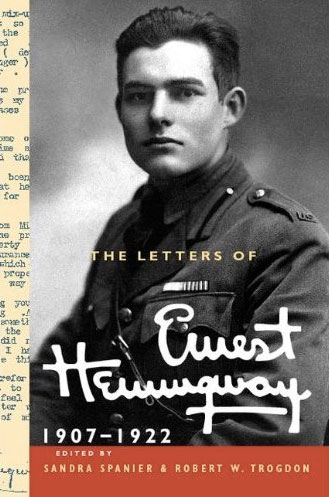 From the lovely illustrated correspondence of Edward Gorey to the touching vintage letters of luminaries on the love of libraries, we’ve previously explored how the uncovered letters of cultural icons set ajar the door to a whole new wonderland of their private selves. Such is the case with The Letters of Ernest Hemingway: Volume 1, 1907-1922 — a fascinating new volume that peels away at a young Hemingway different, richer, more tender than the machismo-encrusted persona we’ve come to know through his published works. After spending a decade sifting through Hemingway’s correspondence, Penn State professor Sandra Spanier collaborated with Kent State University’s Robert W. Trogdon to curate this first in will be a series of at least 16 volumes.
From the lovely illustrated correspondence of Edward Gorey to the touching vintage letters of luminaries on the love of libraries, we’ve previously explored how the uncovered letters of cultural icons set ajar the door to a whole new wonderland of their private selves. Such is the case with The Letters of Ernest Hemingway: Volume 1, 1907-1922 — a fascinating new volume that peels away at a young Hemingway different, richer, more tender than the machismo-encrusted persona we’ve come to know through his published works. After spending a decade sifting through Hemingway’s correspondence, Penn State professor Sandra Spanier collaborated with Kent State University’s Robert W. Trogdon to curate this first in will be a series of at least 16 volumes.
Though Hemingway had articulated to his wife in the 1950s that he didn’t want his correspondence published, his son, Patrick Hemingway, says these letters could dispel the myth of the writer as a tortured figure and distorted soul, a pop-culture image of his father he feels doesn’t tell a complete and honest story.
My principal motive for wanting it to happen was that I think it gives a much better picture of Hemingway’s life than any of his biographers to date […] [My father] was not a tragic figure. He had the misfortune to have mental troubles in old age. Up until that, he was a rather lighthearted and humorous person.” ~ Patrick Hemingway
The letters — lively, quirky, full of doodles and delightfully unusual spellings — cover everything from Hemingway’s childhood in Oak Park, Illinois, to his adventures as an ambulance driver on the Italian front in WWI to the heartbreak of his romance with a Red Cross nurse named Agnes von Kurowsky and his eventual marriage to Hadley Richardson.
From lovers to rivals to his mother, the recipients of the letters each seem to get a different piece of Hemingway, custom-tailored for them not in the hypocritical way of an inauthentic social chameleon but in the way great writers know the heart, mind, and language of their reader. The letters thus become not only a tender homage to this unknown Hemingway, revealing new insights into his creative process along the way, but also a bow before the lost art of letter-writing itself.
via The Chronicle of Higher Education
(Via Brain Pickings.)
Thursday, October 13, 2011
100s of Common Errors in English Usage
A person who is the target of jokers is the butt of their humor (from an old meaning of the word “butt”: target for shooting at). But the object of this joking has to bear the brunt of the mockery (from an old word meaning a sharp blow or attack). A person is never a brunt. The person being attacked receives the brunt of it.
and Classic and Classical:
“Classical” usually describes things from ancient Greece or Rome, or things from analogous ancient periods like classical Sanskrit poetry. The exception is classical music, which in the narrow sense is late 18th- and 19th-century music by the likes of Mozart, Haydn, and Beethoven, and in the broader sense formal concert music of any period in the West or traditional formal music from other cultures, like classical ragas.
“Classic” has a much looser meaning, describing things that are outstanding examples of their kind, like a classic car or even a classic blunder.
or Nauseated and Nauseous:
Many people say, when sick to their stomachs, that they feel “nauseous” (pronounced “NOSH-uss” or “NOZH-uss”) but traditionalists insist that this word should be used to describe something that makes you want to throw up: something nauseating. They hear you as saying that you make people want to vomit, and it tempers their sympathy for your plight. Better to say you are “nauseated,” or simply that you feel like throwing up.
Lots more fun here.
Complaints Choir: The World’s Mundane Grievances Set to Song
One cold winter night in 2005, while strolling through Helsinki, Finish artists Tellervo Kalleinen and Oliver Kochta-Kalleinen had an epiphany — what if they could transform the daily grievances people complain about en masse into a source of surprise and joy? In Finish, there’s an actual word for those mass complaints — “Valituskuoro,” which translates roughly to “complaints choir.” So the duo set out capture the world’s everyday rants in actual choirs and Complaints Choir was born — a traveling record of the world’s grievances, crowdsourced from citizens and set to song.
We defined complaining as “dissatisfaction without action,” nevertheless behind most of the complaints there is an idea or a belief or a value that a person is committed to. Complaints have therefore inbuilt the potential of being a transformative power. The truth about the revolution in East Germany is, that it only happened because a critical mass of people was dissatisfied with and complained about everyday life issues.
There is another fundamental aspect to the culture of complaining. Why do people complain about things they have not the slightest influence upon, for example the weather? Here complaining is not at all about changing things, but rather to build a communal feeling: I am not alone with my little problems, we share the same burden – of an total in-acceptable climate for example.”
From Birmingham to Budapest, Helsinki to Hamburg, Jerusalem to Chicago, the choirs cover everything from the petty and mudane (job resentment, traffic, bureaucracy, the weather) to the amusingly specific and offbeat (neighbor holding Hungarian folk dance classes above bedroom, being ignored by friend’s cat, racist grandmother)
Got the itch for communal ranting? Here’s the DIY guide to orchestrating one in your city. (Did someone say Occupy Wall Street Choir?)
via Deafening Silence HT GMSV (Via Brain Pickings.)
Wednesday, October 12, 2011
Mapping the Labyrinth of Literature
What Leo Tolstoy can teach us about curation.
Understanding creative influence is essential to understanding remix culture and a centerpiece of combinatorial creativity. I recently collaborated with illustrator extraordinaire Wendy MacNaughton and Michelle Legro of Lapham’s Quarterly of a subjective visualization of creative influence in literature and other arts, but this ecosystem of cross-pollination is far more layered and complex than a playful graphic could possibly convey. The Anatomy of Influence: Literature as a Way of Life is Harold Bloom’s ambitious effort to peel away at these many layers. Bloom, who for the past half-century has been exploring that ecosystem as a Yale literature professor and contemporary culture’s most significant literary critic, offers insight on 30 of the world’s most iconic writers, from Shakespeare to Joyce to Emerson, and examines issues ranging from the role of “creative misreading” in the joy of literature to the supreme fiction of the romantic self to the influence of a mind on itself. Literature for me is not merely the best part of life; it is itself the form of life, which has no other form.” ~ Harold Bloom
The book is a follow-up to Bloom’s 1973 classic, The Anxiety of Influence: A Theory of Poetry, and was inspired by Robert Burton’s 1621 masterpiece, The Anatomy of Melancholy. Of that influence, Bloom writes:
Traces of Burton’s marvelous madness about in this book, and yet it may be that all I share with Burton is an obsessiveness somewhat parallel to his own. Burton’s melancholy emanated from his fantastic learning: he wrote to cure his learnedness. My book isolates literary influence as the agon of influence, and perhaps I write to cure my own sense of having been overinfluenced since childhood by the great Western authors.”
But the part that captivated me the most was this quote from a Leo Tolstoy letter in the book’s epigraph, which articulates the essence of my own curatorial sense of purpose better than I ever could:
For art criticism we need people who would show the senselessness of looking for ideas in a work of art, and who instead would continually guide readers in that endless labyrinth of linkages that makes up the stuff of art, and bring them to the laws that serve as the foundation for those linkages.”
A true treat for literati and remixologists alike, The Anatomy of Influence is an exquisite paean to the love of literature, one that pulls you into its enthusiasm with equal parts mesmerism and cunning precision.
(Via Brain Pickings.)











